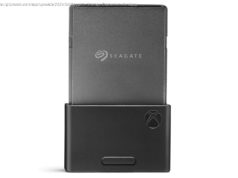Playing a Fighter in Dungeons and Dragons comes with few caveats. However, playing a Battle Master well requires picking the right maneuvers.
The Fighter of Dungeons & Dragons easily trumps most Classes in terms of combat versatility and superiority, thanks in part to their various Proficiencies and arsenal of combat options. However, the Battle Master Martial Archetype perhaps best represents the Fighter’s technical know-how in tactical combat. Essentially, this D&D Subclass relies on Maneuvers to « dictate » the flow of combat.
The Battle Master has access to more than 20 Maneuvers to use in battle. However, a full Battle Master build may only choose nine Maneuvers by 20th Level, so they must pick carefully. Just which of these Maneuvers benefits players the most?
Updated on September 9, 2023 by Rhenn Taguiam: With the Baldur’s Gate 3 release bringing more people to the Dungeons & Dragons TTRPG, it’s easy for newcomers to feel overwhelmed with the multitude of options the roleplaying game offers at the onset. This is especially the case for Battle Master Fighters, as their options for Maneuvers provide quite an attractive tactical close-up alternative to Wizards and other spellcasters with various spells. For both TTRPG newcomers and savants who want to enjoy the Battle Master experience, certain Battle Master Maneuvers are must-grabs, including those that make throwing weapons easier, compel allies to strike, disarm opponents, attack from a distance, or even push enemies away. 20 Quick Toss
As games like Baldur’s Gate 3 is showing, there’s potential in D&D for Thrown Weapons to provide much-needed firepower to the Battle Master. Thanks to Quick Toss, players can draw a Thrown Weapon and make a ranged attack to throw it – all as part of a Bonus Action. Should players land a hit this way, they add one Superiority Die to the damage.
While a Battle Master likely has a better range of attacks when dealing with opponents up close, Quick Toss as a situational Maneuver can be helpful in emergencies. For instance, a restrained Battle Master who wants to attack can use Quick Toss to deal some damage while spending the rest of the turn trying to remove whatever is halting their movement. 19 Commander’s Strike
Staying true to the premise of a Battle Master being a commander in combat, Commander’s Strike can trade one of the character’s Attacks for the turn and use their Bonus Action to direct a nearby ally to strike. In turn, an ally within hearing range can use their Reaction to make a weapon attack, with the Battle Master able to roll one Superiority Die and its result to the damage roll upon a hit.
At higher levels, losing out on an Attack shouldn’t dent the Battle Master’s overall damage output, especially when Commander’s Strike is paired with a high-DPS ally. When close enough to a Rogue or a Monk, Commander’s Strike could potentially deal more damage to an enemy versus a Battle Master’s regular attack. 18 Disarming Attack
Unless one is a Monk in Dungeons & Dragons, unarmed strikes won’t do as much damage to opponents compared to moments when one is wielding a weapon. This caveat makes Disarming Attack an effective way of debilitating enemy mobs, mainly when Battle Masters use this on pesky opponents. Disarming Attack activates upon hitting an opponent with a weapon attack, wherein players can expend a Superiority Die to add to their damage roll while also forcing the target to make a Strength Save. Upon failure, that opponent drops an object of the player’s choosing.
Depending on the level, a Battle Master could potentially expend all their Superiority Die to make as many as four opponents drop their weapons. This can give a lot of openings for other teammates to take advantage of an enemy’s lowered DPS. 17 Lunging Attack
Most Battle Masters in D&D fight in melee range due to the nature of their base Fighter Class, making it rather difficult to hit opponents at mid-range unless they have Reach Weapons such as Spears and Glaives. However, Lunging Attack can give players a much-needed upgrade on their attacking capabilities, requiring a Superiority Die in exchange for giving them a 5-foot range extension while adding its results to the damage roll.
When used by a typical melee fighter, the 10-foot attack range can give Battle Masters the opportunity to protect adjacent allies from much further threats. Moreover, using Reach Weapons such as Glaives can give Battle Masters the benefit of safety as they don’t have to move as much to secure an attack at mid-range. 16 Pushing Attack
With the Charger Feat, a D&D character can Dash towards an opponent to either make an attack or shove them away. However, Battle Masters can get an improved version of this Feat with Pushing Attack, where a Superiority Die is added to the damage roll while making a Strength Save against being pushed. Failing this pushes them away from the Battle Master as far as 15 feet, giving the Battle Master and their allies room to outmaneuver them.
At its core, Pushing Attack becomes a decent substitute for the Charger Feat, as this “reverses” the ability’s steps without the cost of an entire Feat.






